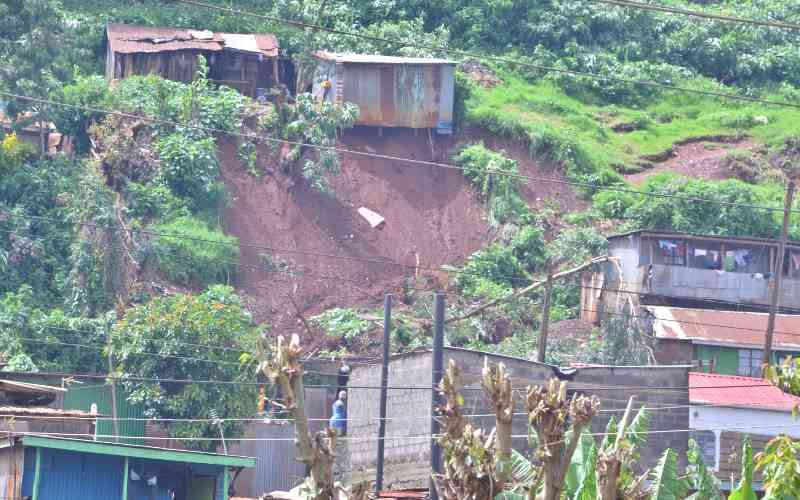By Collins Kowuor
The range of land uses is as extensive as the human experience, which covers several activities that occupy our daily existence. There are seven categories of land uses
The issue of idleness and use of land seems to have as many interpretations as the number of Kenyans. This is based on my experience over the years in the practice of land economics. On Wednesday, when I was having an afternoon meeting with a senior professional colleague, Steve, he shared with me the history of Karen. He remembers one European who was totally against Africans buying land in Karen. His reason! Africans would bring cows, goats and chicken to Karen in place of horses and dogs. Different views on use of land.
What are some of the uses that land can be put to? Is it true that some lands are idle? May be this was answered by Pocock when he said that “The land too poor for any other crop, is best for raising men.” I know that we don’t have a National Land Use Policy yet as country but it is being formulated.
Rwanda has it. Article 67 of the Constitution of Kenya 2010 provides that National Land Commission is to monitor and have oversight responsibility over land use planning throughout the country.
Various councils and municipalities, which will be transformed into county governments, have designated uses of land in form of zones. The famous zones may be the industrial areas in Nairobi, Mombasa and Kisumu and the Export Processing Zone in Athi River.
The range of land uses is as extensive as the human experience, which covers several activities that occupy our daily existence. There are primarily seven categories of land uses namely commercial, agricultural, industrial, residential, recreational, institutional and open space.
These may also be looked at in terms of place where we spend, where we work, where we live, and where we relax. These categories have further sub-categories and variants.
Institutional uses of land encompass schools, churches, hospitals and government buildings. Recreational land uses are essentially for fun, relaxation and entertainment such as parks and playgrounds. Commercial land uses have to do with where we work and do business such as offices and supermarkets.
The residential land use is where people live in terms of townhouses, apartments, bungalows, villas, name it. You may find that one who has a block of apartment may consider land with a bungalow as idle.
But is it idle? Agricultural land use includes where we grow food not just for humans but also for animals. Others may consider land used for growing grass for producing hay idle.
This reminds me of my friend Tiampati from pastoralist community who told me that once a group decided to use their land to produce hay instead of keeping cattle.
During the dry season, they made a lot of money by selling hay in bales to other pastoralists to feed their cattle. May be in discussing this issue of land use and idle land we need to remember the Indian story of the six blind men and an elephant. I prefer using the Jain version, which is clearer.
The story goes that six blind men were asked by a king to determine what an elephant looked like by feeling different parts of the elephant’s body. The blind man who felt the leg said that the elephant was like a pillar; the one who felt the tail said that the elephant was like a rope; the one who felt the trunk said that the elephant was like a tree branch; the one who felt the ear said that the elephant was like a hand fan; the one who felt the belly said that the elephant was like a wall; and the one who felt the tusk said that the elephant was like a solid pipe.
Do you know what the king told them? “You are all right, the reason every one of you is giving different analogy is because each one of you touched different parts of the elephant. So, actually the elephant has all the features you mentioned” (and may be more)
Stay informed. Subscribe to our newsletter
The regulation of land uses is provided in the Constitution, Article 66 to be precise and is to be operationalised legislatively within five years from August 2010. The kind of legislation enacted on land use will determine where and how fast real estate development takes place.
This has a bearing on housing provision and economic growth in the country. You should, therefore, think thrice next time somebody tells you that some land is idle as you remember the story of the six blind men who touched an elephant.
The writer is the Chairman of Institution of Surveyors of Kenya. [email protected]
 The Standard Group Plc is a
multi-media organization with investments in media platforms spanning newspaper
print operations, television, radio broadcasting, digital and online services. The
Standard Group is recognized as a leading multi-media house in Kenya with a key
influence in matters of national and international interest.
The Standard Group Plc is a
multi-media organization with investments in media platforms spanning newspaper
print operations, television, radio broadcasting, digital and online services. The
Standard Group is recognized as a leading multi-media house in Kenya with a key
influence in matters of national and international interest.
 The Standard Group Plc is a
multi-media organization with investments in media platforms spanning newspaper
print operations, television, radio broadcasting, digital and online services. The
Standard Group is recognized as a leading multi-media house in Kenya with a key
influence in matters of national and international interest.
The Standard Group Plc is a
multi-media organization with investments in media platforms spanning newspaper
print operations, television, radio broadcasting, digital and online services. The
Standard Group is recognized as a leading multi-media house in Kenya with a key
influence in matters of national and international interest.








